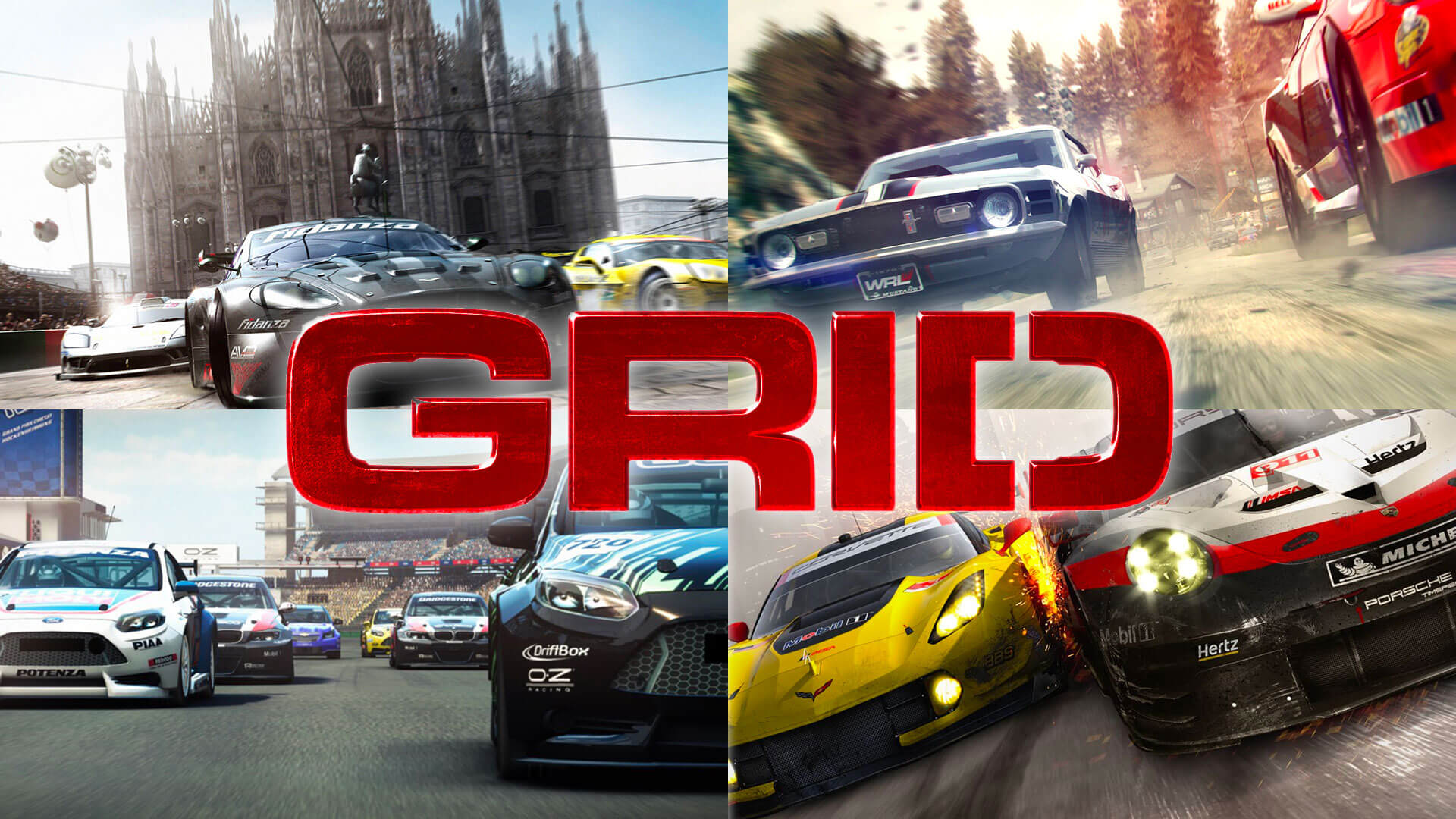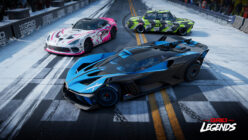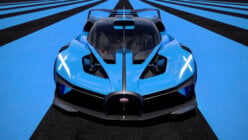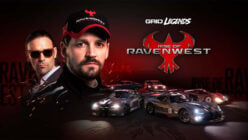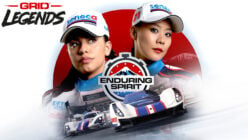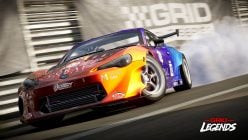Racing games take many shapes, forms and sizes. There’s no denying that for every superb title there are just as many others that fall short. For me, that is very curious. At the end of the day, a racing game is a simple premise: cars on a track, some drama thrown in there — boom — enjoy the game. So long as the gameplay is good, then that’s a good racing game, or so you’d think.
There’s an untapped, undefined element that makes us love certain titles. The very mention of their names can make you remember fond memories or go ultra-defensive when faced with slander. The GRID series is one of the games that really does embody this phenomenon. The gameplay is… good enough, and the overall discipline structure is something that has been seen quite often. Yet, these are beloved titles: many would consider GRID the finest in the Codemasters album. I revisited the series to try and work out why that was and if the love is truly earned.
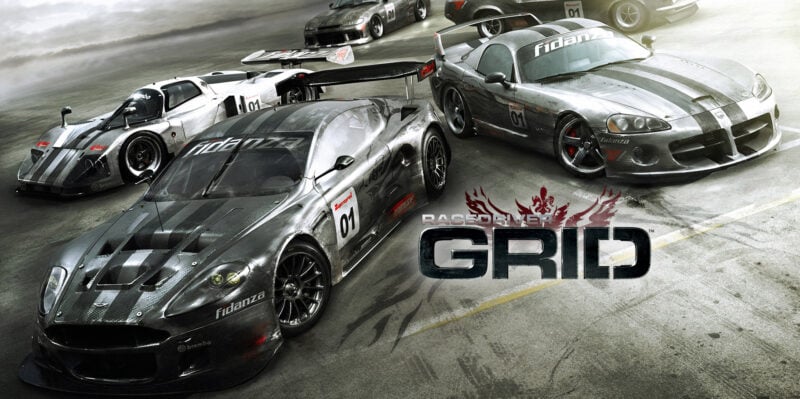
GRID (2008)
The atmosphere of 2008’s GRID title is unmatched and has aged like a fine wine, getting better as every pretender tries to do something similar. The sights, the sounds, even the piss-colored filter that EGO engine-powered games had for that weird time period — it all comes together in a tidy package. On the sound side of things, cars roar in a suitably grumpy manner. Your Impala isn’t too happy about getting smashed about on the Istanbul Circuit or getting pummelled at Milan, this much is clear.
However, the audio design goes way beyond simple engine noises. If it didn’t, there wouldn’t be too much special here given the genre had finally started taking engine notes fairly seriously. It’s the excitement of the crowd and the way damage is conveyed through your eyes and ears. Cars crunch as they mash together, the “oomph” as you overcook a corner and smash into a tire wall is all here and given the care and attention that we don’t always see outside of the rally sub-genre.
The atmosphere of the game is one for the underdogs — the racing team that’s just formed because some guy happened to earn enough cash to buy a few cars off eBay Motors. A couple seasons down the line, the illustrious Ravenwest is paying attention, invites to the Le Mans 24 hour event (and the hilariously inaccurate La Sarthe recreation) become frequent, all capping off each in-game season in as hyped a manner as possible.
Speaking of hype, we’ve not even talked about the soundtrack yet which is as glorious as it is boisterous. It’s used so effectively that it feels criminal it’s taken this long. The game is mostly played without any music tracks at all… but then, you get to the final stage of an event and its very close at the front. Suddenly, an exciting track kicks off and you feel your eyebrows naturally frown and you’re suddenly taking things that tiny bit more seriously.
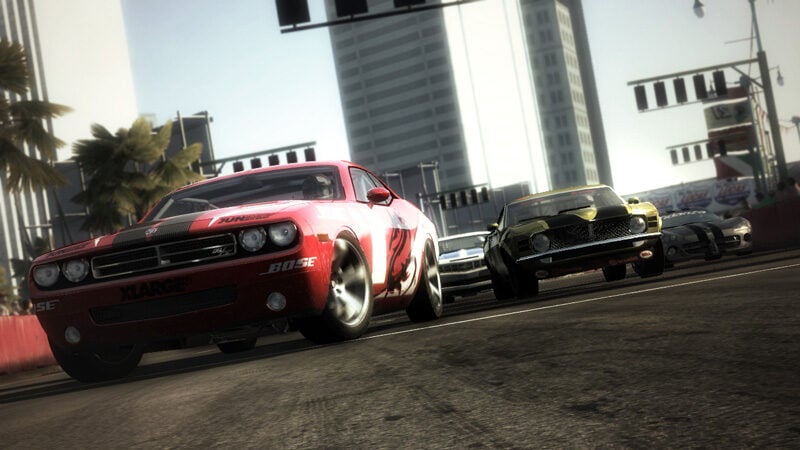
It happens to all of us when we play GRID, it taps into our necessity to be fast and only really shows its true power to entice us in at the right moments. If the in-race tunes are banging, the post-race songs are triumphant (at least if you win) and every time they start you’ll get that kick that makes you watch at least thirty seconds of the race replay.
Oh, the replays. Another impressive element of the entire GRID package. Fantastic camera angles and swooping shots show the battle that has taken place in style. Perspectives shift between that of the TV camera and the driver itself, always seemingly at just the right time. GT Sport’s replay technique is the fancy Michelin-star Italian restaurant just off high street showcasing beauty, class and a tasty experience. By comparison, GRID is that specific fast food joint that delivers the post-hangover meal perfectly. It’s messy and chaotic but it hits just right every time. Every so often, we need a palate cleanser to the pristine ways of the sim racer and in pretty much every regard, GRID delivers this.
There is just so much to dig into but I really have to talk about the other games in the series. To conclude, Race Driver: GRID is a game which emulates racing in a way that still hasn’t really been accomplished. Its assured swagger, variation in events and content keeps you coming back time-after-time until you get to that LMP1 class showdown with Ravenwest and finally put the rival team in its place. Many titles have tried to dramatize the racing environment — such as Shift 2: Unleashed — but none of these find the balance that the original GRID title attained. Its an authentic racer that wears its personality on its sleeve and delivers a fantastic experience that stands the test of time.
Plenty of others may dissect the handling engine to the nth degree and discuss that at length but that almost feels disingenuous to GRID’s overall angle to racing. Sure, the pivot steering can be frustrating and high powered cars are just barely enjoyable but it’s everything around the gameplay that envelopes why people love this game — so I’ll avoid being too cynical. GRID is one of the finest arcade racing games of all time.
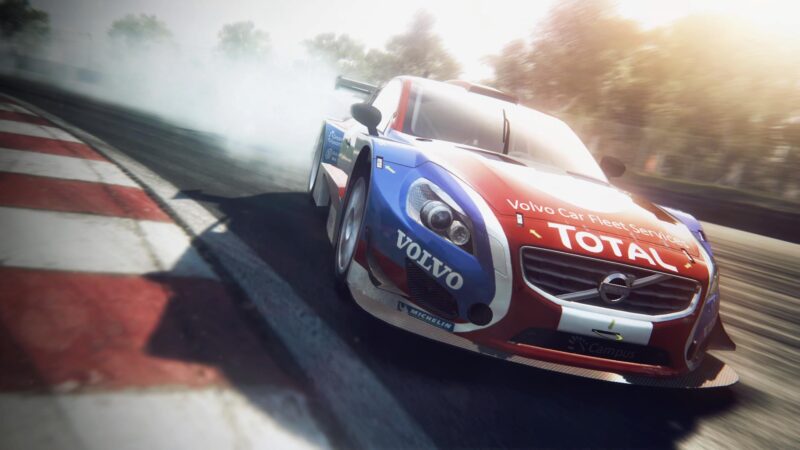
GRID 2
After a blockbuster debut, Codemasters kept us on strings waiting for the next title in the series. Part of me likes to think this was because of the huge reputation that the game had to live up to. A sequel to GRID had to be more bombastic, more expansive and certainly just as fun (if not moreso).
So, the sequel released and, well, it’s a mixed reception. Critics really liked the game, some fans do too but there’s definitely a split. The much heralded and hyped RealFeel driving engine was supposed to be the star of the show. Just read this, almost insane, preview that GamesRadar put out. There’s comparisons to Gran Turismo and Forza Motorsport in there — GRID 2 was seemingly not playing around.
The (slightly biased) truth though, is that GRID 2 is just a fun game but nothing amazing. It works well and it’s a fun drive, that much is true. The thing is, we’ve just waxed lyrical about the first game in every way that isn’t gameplay — and I’m not sure that quite holds true for the sequel. It drives better but a lot of the core almost feels lost in translation. The moody atmosphere in the upstart quest towards dethroning Ravenwest turns into a shot at winning the WSR, a prestigious tournament that brings the best-of-the-best across every discipline in a worldwide racefest.
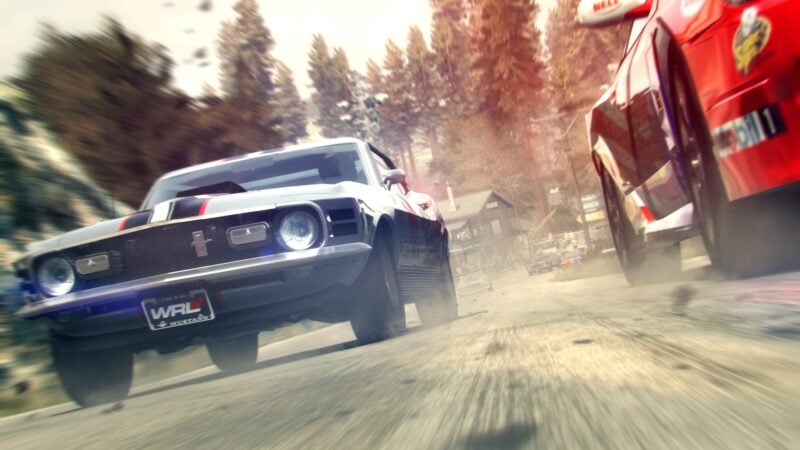
My fellow Time Extend co-host and Mirror Mode extraordinaire Adam Ismail described this as “something nobody asked for” in our podcast discussion but there’s no denying the concept alone is cool. Execution is pretty great too: the career mode is more engaging than most and it continues the series’ now-established tradition of mixing and matching tracks and cars to great effect.
Some of the tracks in particular are really great. One standout all these years later is California Coast, a rousing trip through the bends and hills of the California coastline, funnily enough. As with a good few of the Codemasters games during this period, it had the “rebellious teen” thing going on with epic gamer references such as: fans, social media, the YouTubes and many other “totally awesome” incorporations of pop culture.
The fans of GRID can sing the praises of many elements of the game but those who like GRID 2 will probably talk about the physics for a bit and the (very) pretty visuals. That’s the issue though, the beauty of the original GRID was not so much in the technicalities but in the subjectivities. It just felt like the personality of the series had been chipped away slightly to make room for a more standard affair that is far from poor but still quite enjoyable none-the-less. It has aged better than the original game in graphics and performance but the slight dip in attitude is notable enough to make it less fond a visit. GRID 2 is still something more than we get now in the modern racing genre but a lot is lost in translation, leaving it feeling a bit empty.
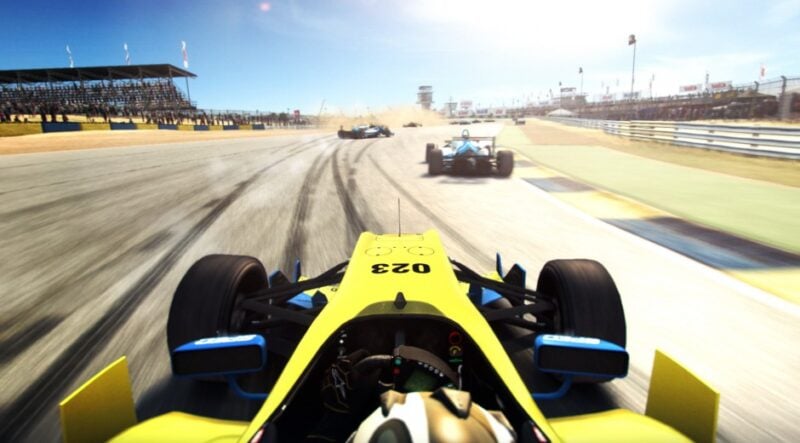
GRID Autosport
Just a single year after GRID 2, a new title was released in the GRID franchise. Hot on the heels of brand new hardware arriving on the market, there was genuine excitement about what a GRID game would look like on the newly launched PlayStation 4 and Xbox One. Wait a second, silly me — I forgot that Autosport was a previous generation exclusive.
Yes, despite having the chance to perhaps capture a market early that didn’t quite have a killer racing game app, Codies made the decision to release a new title on the PlayStation 3, PC and Xbox 360. It was controversial at the time and almost felt like it was being sent out to be played by a few and ultimately forgotten. That is a huge shame, because Autosport is a fantastic racer that feels like a send-off to the original GRID trilogy.
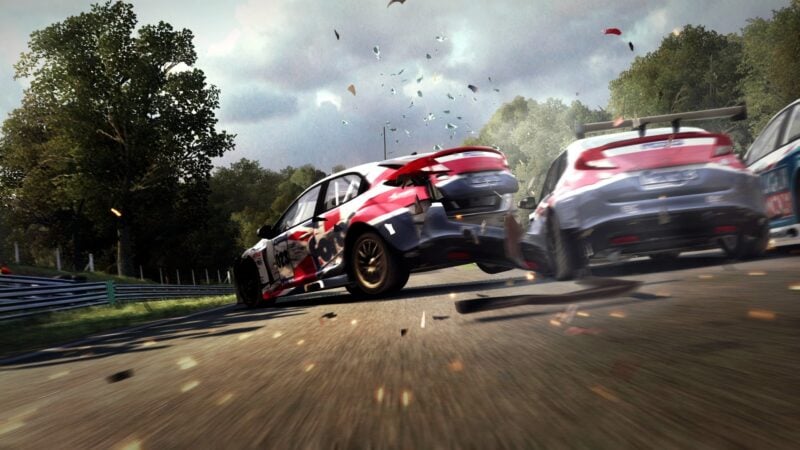
After GRID 2’s ambitious and lofty goals, Autosport dials it back to pure racing with a streamlined career structure powered by a huge number of cars and tracks (which DLC would further enhance). Rather than move your own team through the ranks in the battle against Ravenwest, you simply take on the driver journey and forge relationships with teams throughout your career. The drivers from previous games are here and Ravenwest returns as the “baddie” that needs to be taken down a peg. The cool part about Autosport is that you can actually sign with Ravenwest. Once again, this gave the feeling that this would be last game in the series we’d see for quite some time.
That proved to be the case. Autosport offered a “Greatest Hits” approach to the GRID series, providing fantastic AI to battle against and many pieces of machinery to drive to your heart’s content. Like 2 before it, Autosport just doesn’t capture that incredible feeling of the original but in its defence, it doesn’t really seem to want to. This is a hyper-focused racer for those who enjoy the racing first and foremost and you’d be hard-pressed to find a better pure arcade racer than this in the past five years.
It’s just a shame that many actually didn’t get the chance to give it a proper go. The recent Switch re-release is making waves and Nintendo fans are snapping up the semi-realistic racer impeccably ported to the hybrid console.
Conclusion
GRID 2019 has just released and reboots the franchise from scratch. Our GTPlanet GRID review breaks down what you can expect but the summation is that it’s almost too lean and crutches the on-track action too much to really stand above the crowd.
Make no mistake though, as an entire franchise, GRID has and will continue to be a fan favorite. The original game is still pound-for-pound an absolute gem of a title and I’m sure most other racers in the genre are still jealous of the impeccable swagger it possesses. The releases that followed just couldn’t grab that same identity but that doesn’t make them bad games – that couldn’t be further from the truth. So, as we move on to the next generation of Codemasters racing games, let’s raise a toast to GRID and how it nearly perfected the arcade racer. The subsequent releases weren’t too shabby either.
If you want to absorb more GRID content, feel free to check out our Time Extend podcast on the first two games of the series.
See more articles on Retrospective Reviews.

